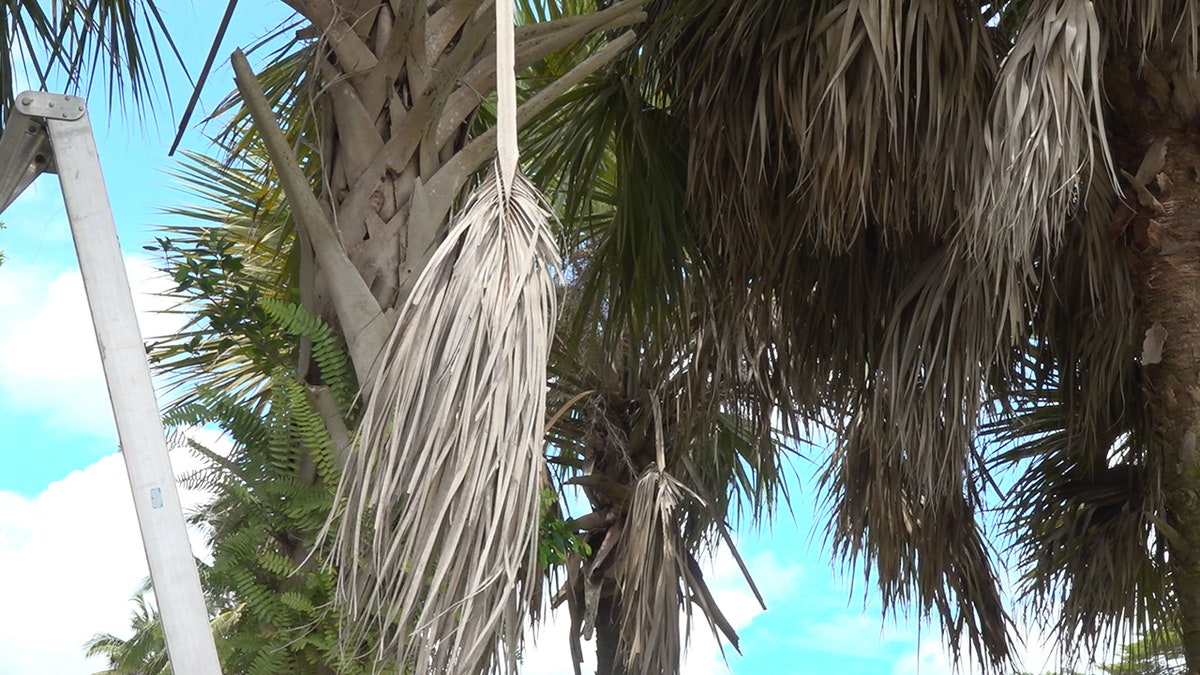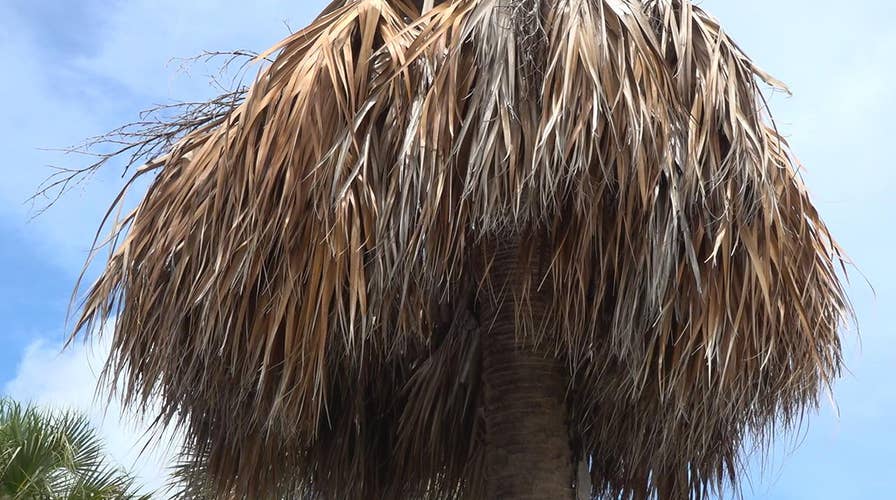Tens of thousands of palm trees dying from bacterial disease
It is caused by a small insect and may impact Arizona and California
FORT LAUDERDALE, Fla. – Palm trees, an icon in the Sunshine State, are in trouble. Florida’s official state trees are dying from a bacterial disease. Scientists call it “lethal bronzing” and it’s turning tens of thousands of majestic palms into crisp, naked plants.
“What happens when this bacteria invades the palm is that it starts replicating in the vascular tissue, which is sort of like the circulatory system for a person, and it clogs up the vascular network, so it’s essentially starving the palm,” said Brian Bahder, a University of Florida scientist leading the state’s battle against lethal bronzing.
Bahder was hired in 2016 to work specifically on the new disease when it started popping up, having previously worked in California on plant pathogens. He said the first occurrence of lethal bronzing in Florida came up in 2006 near the Tampa area, ultimately spreading to 31 counties, according to his 2018 research.
He added: “We can find it as far north as Jacksonville and we have reports of it in the Florida Keys as well, so now it's gone from being found in 2006 to three counties on the West Coast, fast forward about a decade and it's pretty widespread in the state.”
As part of their research, Bahder’s team is asking homeowners to send samples of dying trees along with a submission form with details of the tree. Ericka Helmick, another scientist at the University of Florida, said there are several things residents should look out for.
FLORIDA MAN LOSES 25 PERCENT OF SKIN TO FLESH-EATING BACTERIA, WIFE SAYS
“Some of those symptoms include the bronzing of the lower leaf structure on the trees, the loss of a spear leaf, non-fruiting trees, sometimes the canopy doesn’t look correct to them,” said Helmick.
Bahder added: “There is a point where once the whole canopy is brown and dead, I think just about anybody would notice.”
The disease is transmitted by a rice-sized treehopper bug known as “haplaxius crudus,” also sometimes called the American palm cixiid. The insect carries the bacteria, and once they latch onto the tree, it’s just a matter of time before all of the tree’s leaves dry up and fall off.

The disease is transmitted by the haplaxius crudus, a rice-sized treehopper bug, sometimes called the American palm cixiid. (Elina Shirazi)
According to Bahder, once a tree shows symptoms of lethal bronzing, they have about two to three months until they die.
"You get a canopy that's fully brown and dead then the leaves all just fall off and you have what's kind of like a pencil sticking out of the ground,” he said.

Bahder says once the trees get sick, there is no chance for recovery. All they can do is give healthy trees an antibiotic injection as a preventive measure. (Elina Shirazi)
Once the trees get sick, there is no chance they will recover. All Bahder’s team can do is give healthy trees an antibiotic injection as a preventive measure.
“We drill a hole into the trunk with a power drill. Same protocol for taking a sample to have it tested and basically you load up a syringe with the antibiotic and inject it into the palm, and right now for preventative treatment it's recommended to do that quarterly, indefinitely. It can get costly long term. So that's why we want to have a curative treatment so that we can potentially eliminate the need for continual treatment of palms with antibiotics,” Bahder said.
Researchers say lethal bronzing likely originated in Mexico. Now, it’s found in parts of Texas, throughout the Caribbean and experts fear it will spread to Arizona and California.
“Now that the disease is here and established it's going to start spreading more and more and as it gets further south where you have a higher density and diversity of palm trees, it's going to start getting worse in South Florida than it has been historically … now that we're somewhat confident in what insect is transmitting it, the next two stages of this are actually trying to fix the problem,” Bahder explained.

Researchers say lethal bronzing likely originated in Mexico. The disease is also found in parts of Texas and throughout the Caribbean. There is also concern it will spread to Arizona and California. (Elina Shirazi)
Bahder and his team are developing a long-term cure for the infected palms, but they estimate it will be one to three years before they complete that cure.
Besides working on preventative measures and an antibiotic cure, Bahder’s team is tackling the insect problem by managing their population.
The researcher is hoping that his work will help preserve Florida’s postcard landscape for the ages. “It's kind of unsightly in your urban landscape to have all these dead trees around. It could drastically change how we see these natural environments,” Bahder said.





















